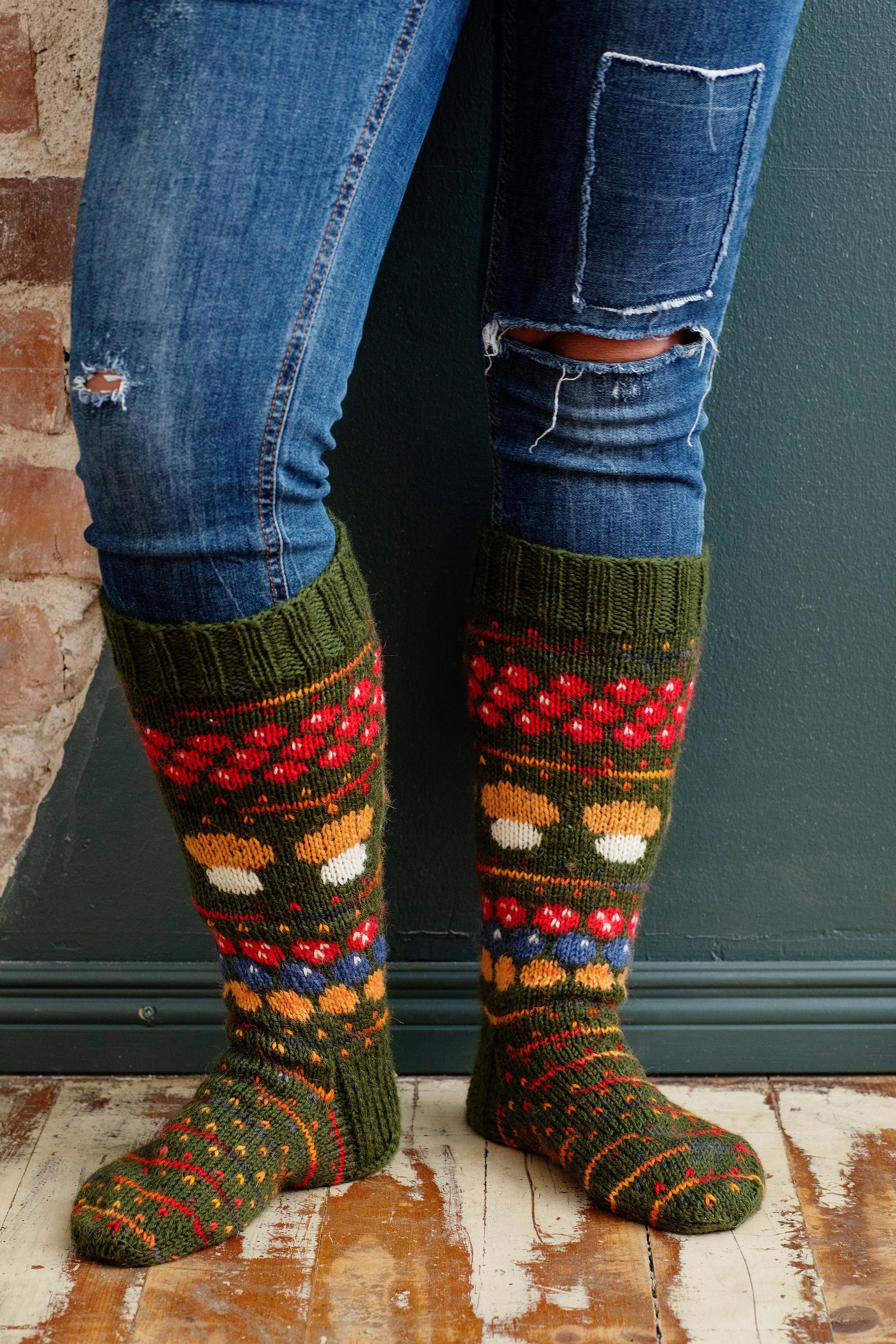
Fall colors
Mushrooms and berries galore! These delicious colorwork socks are brimming with Autumn treats
Lingonberries, blueberries, wild strawberries, cloudberries, mushrooms... These Autumn forest colorwork socks are decorated with the gifts of the forest. The design was created by Finnish knitwear designer Sisko Malinen, known for her Sissukat sock patterns.
Size: EU 39.
Autumn forest socks: supplies
- Novita 7 Brothers yarn (75% wool, 25% polyamide, 150 g = 300 m) in the following shades: dark green (371)*, natural white (010), red (549), honey (289), denim (160)*, orange (278) (just a little), and Polaris Nuotio (848)*
- Double-pointed needles 3.5 mm (US 4).
Note! The yarns marked with an asterisk (*) have been discontinued. You can substitute them as follows:
- 7 Brothers dark green (371): spruce (391)
- 7 Brothers denim (160): late afternoon (187) or sky (124)
- Polaris Nuotio (848): ray (826).
Stitch patterns
Ribbing: k2, p2.
Stockinette stitch in the round: knit all sts.
Colorwork: follow the chart patterns.

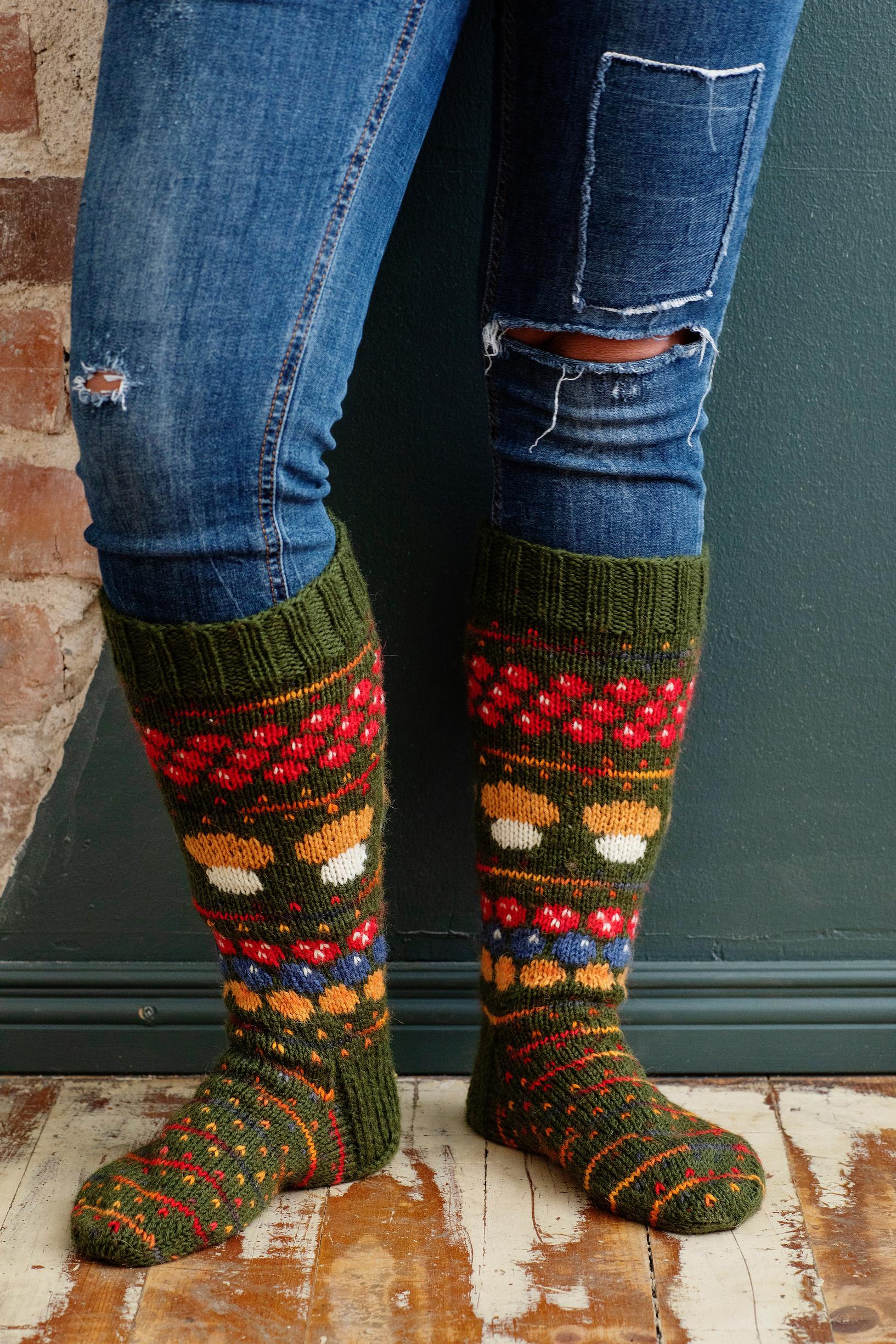

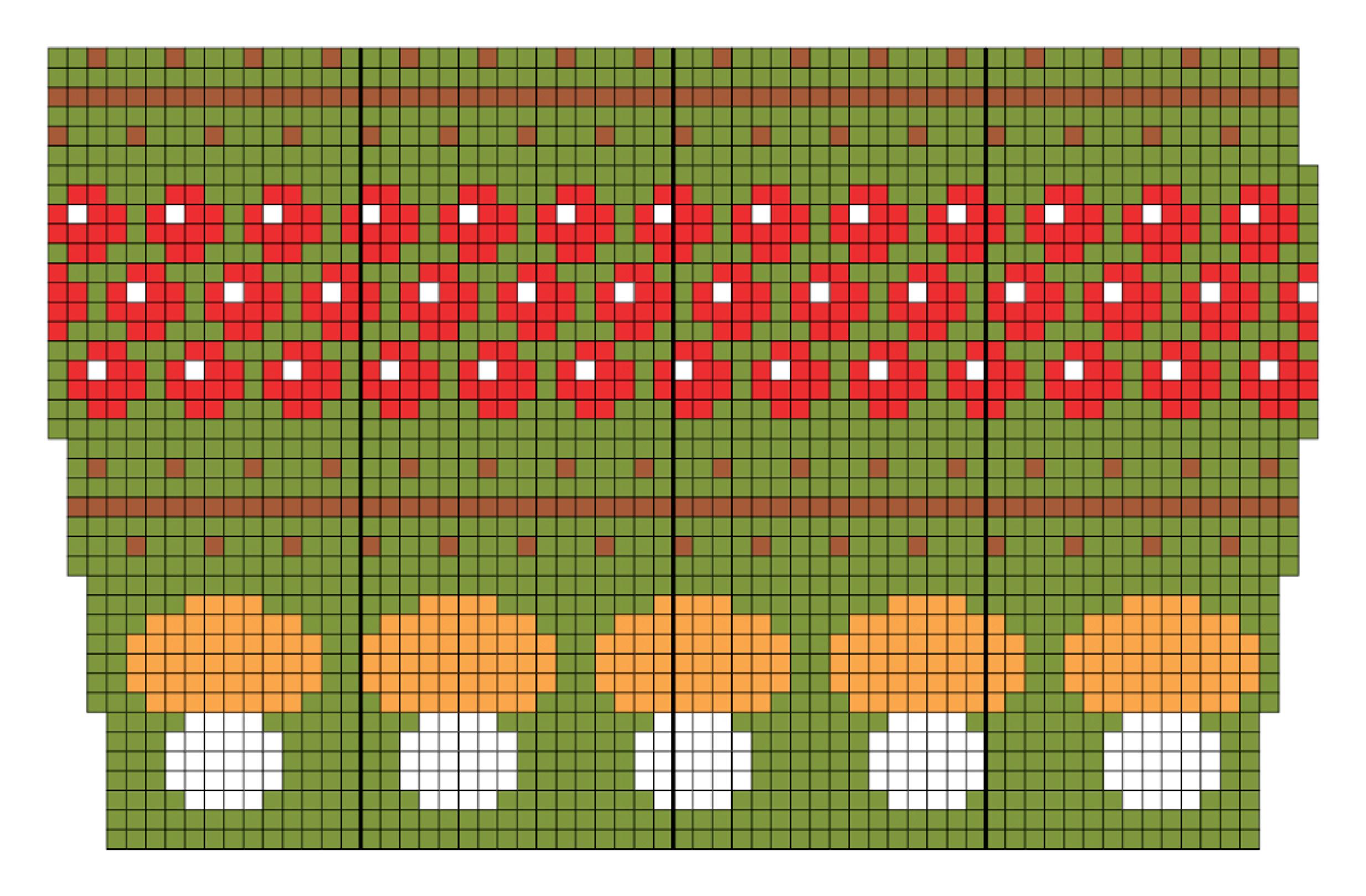

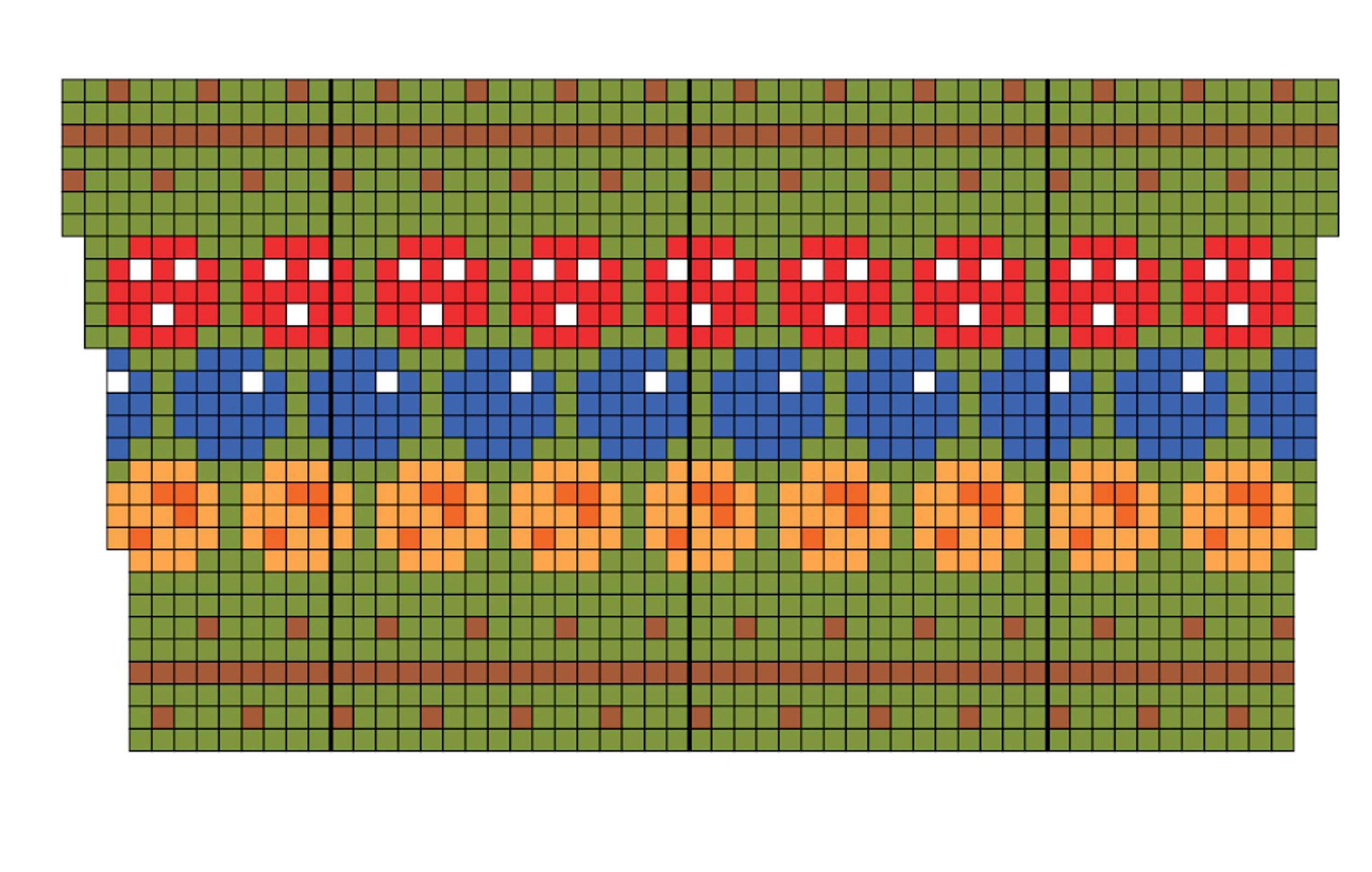

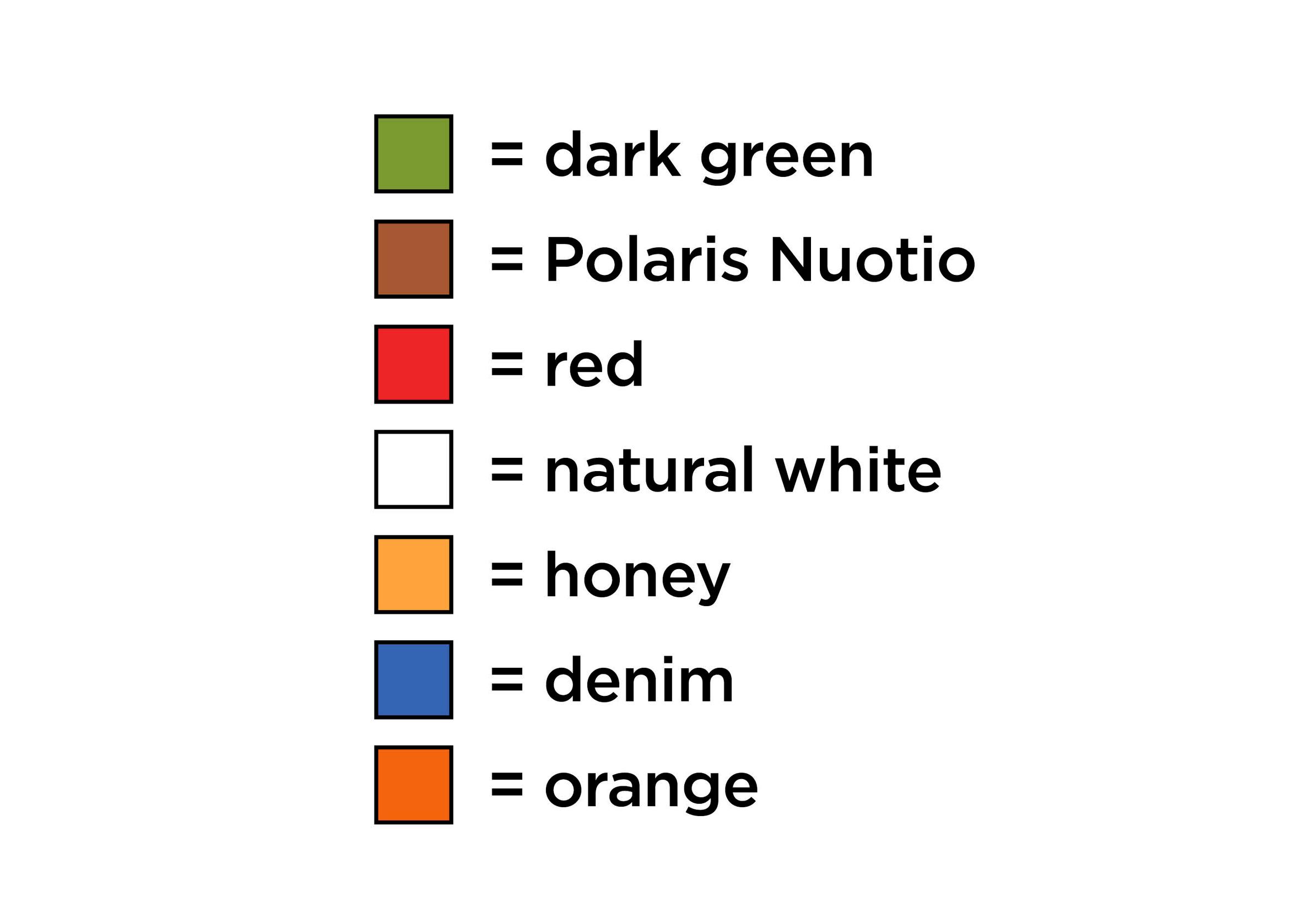
Gauge
21 sts = 10 cm, 24 rows = 10 cm.
How to knit the Autumn forest socks
- Cast on 64 sts with green. Distribute them onto four needles, 16 sts on each needle. Work k2, p2 ribbing in the round for 16 rounds. Then work 2 rounds in stockinette.
- Begin the colorwork following Chart 1 at the bottom of the diagram. Note! Increase 1 st before the lingonberry motif so the patterns line up correctly (see the chart). The chart also indicates where decreases are made.
- Then work Chart 2. At the ankle, redistribute the sts so that each needle has 13 sts.
- Begin the heel flap. It is worked in a reinforced stitch as follows: knit the sts on needle 1 onto needle 4 and turn. The heel flap is worked back and forth over 26 sts. On the WS: slip the first st purlwise, then purl the remaining sts, turn. On the RS: *slip 1 st, k1*, repeat *–* across. Repeat these two rows until the heel flap has 26 rows.
- Then work the heel turn decreases: continue in reinforced stitch. Work 17 sts from the right edge. Make an skp decrease (= slip 1 knitwise, k1 and pass the slipped st over). Turn the work. Slip the first st purlwise, purl 8 sts, then p 2 together. Turn. Continue in this manner so that each turn reduces the side sts by one. Work until no side sts remain. You will have 10 sts left, split them onto needles 1 and 4, 5 sts on each. With needle 1, pick up 13 sts along the heel flap edge + 1 st between needles 1 and 2, then pick up 13 sts + 1 st between needles 3 and 4 on needle 4. Knitting these sts through the back loop will help create a neater edge.
- Knit according to the foot top and sole charts (see below), decreasing at the end of needle 1 and the beginning of needle 4 until each needle has 13 sts.
- Knit the foot to your desired length, then begin the toe decreases: decrease at the end of needle 1 and the beginning of needle 2, as well as at the end of needle 3 and the beginning of needle 4 on every other round, until you have 7 sts on each needle. Then decrease on every round. When 8 sts remain, break the yarn, draw it through the sts, and weave in the ends. Finish by weaving in all remaining yarn tails.

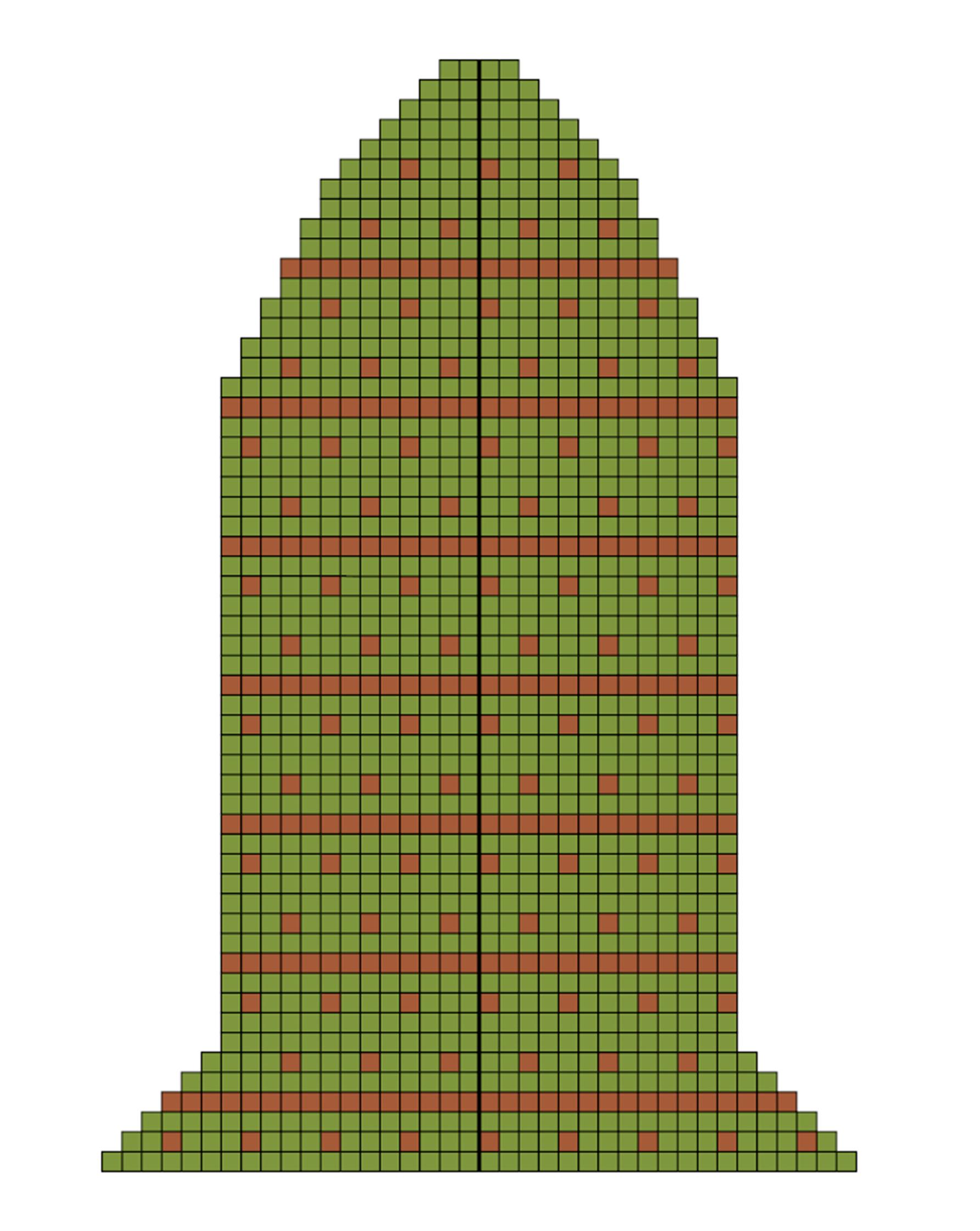

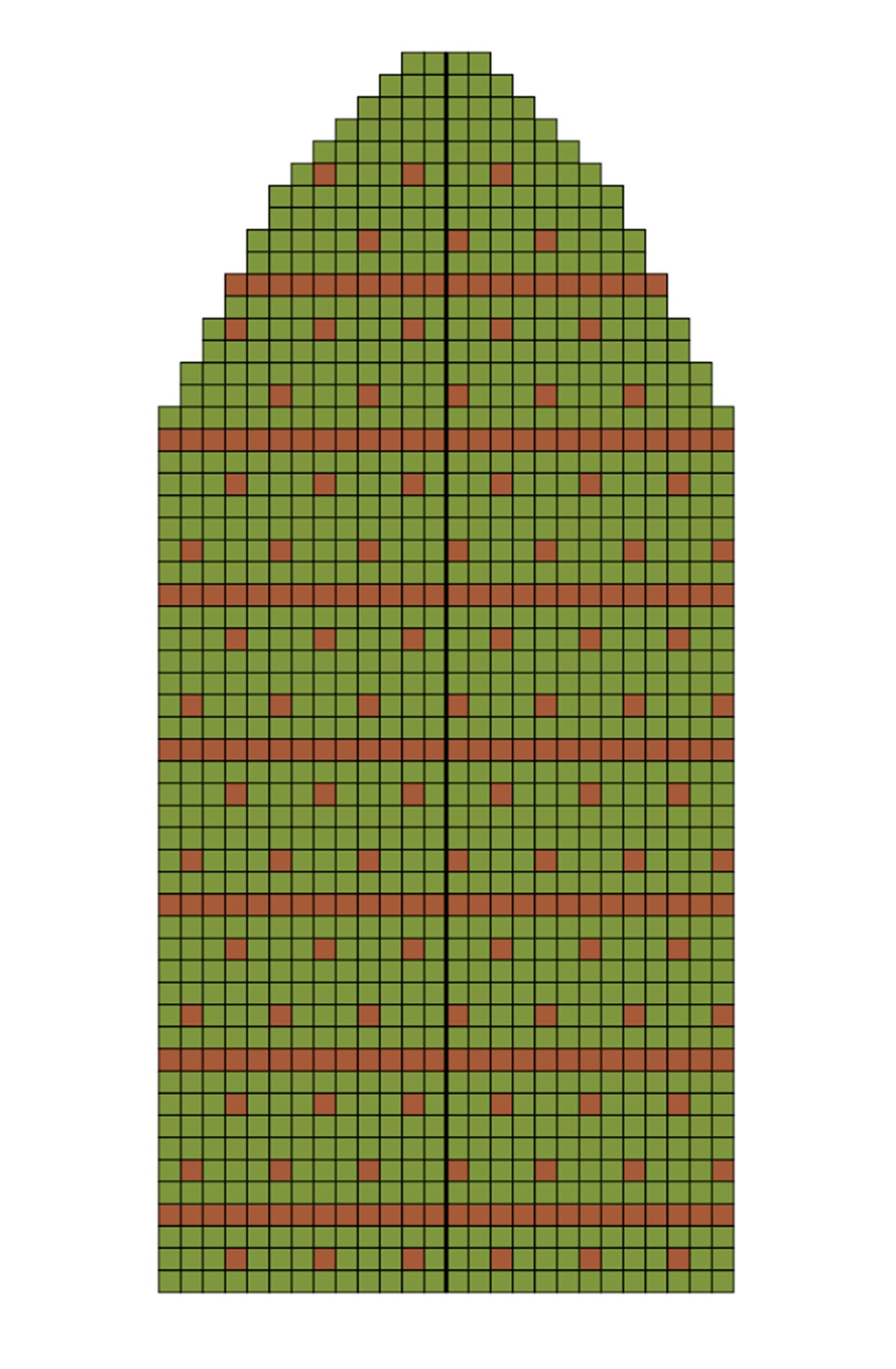

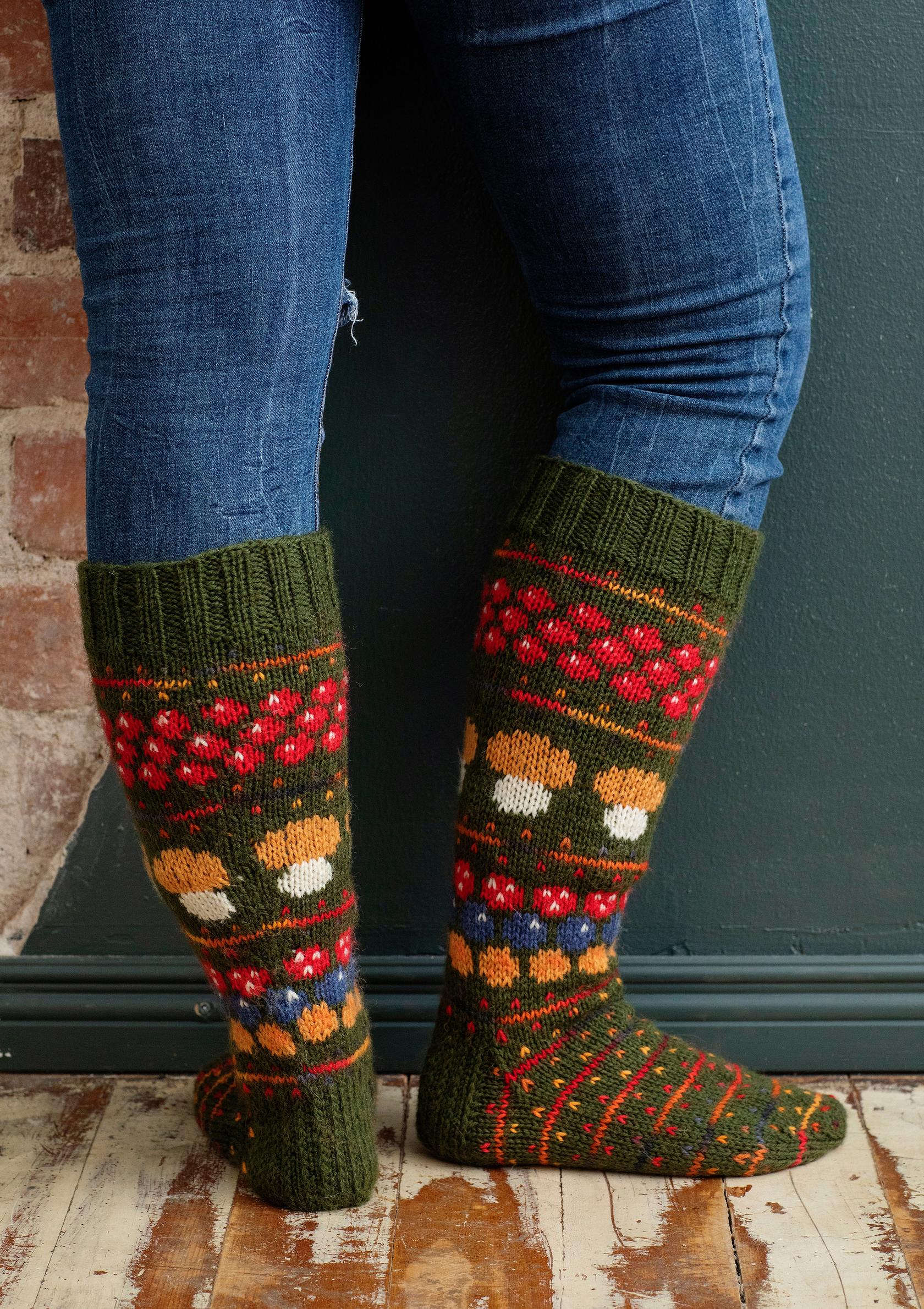
Inquiries about the pattern: Sisko Malinen, Sissukat Facebook page
Edited on September 23, 2025: Added gauge information to the pattern.
Most recent
Latest


